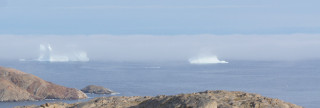Soy Sauce Hunting

They eat my skin: ‘Mattak’ they call it. Cut in small cubes you can make out the mottled white pattern on my skin attached to the blubber. It is thicker than that of other whale species – and some say better tasting.
The Sermilik Fiord where the Great Ice calves, and icebergs drift towards the open sea all year round is where they try to kill me—using motorboats as rifle platforms, operating in parallel with kayaks that attempt to harpoon me or my fellows if we are shot with a buoy to prevent us disappearing into the deep.
Hunting is both traditional and modern at the same time. The hunters live in towns that do perhaps not look very urban: low and scattered, but very urban when you consider the quality or the lives of people, the access to welfare society services they enjoy, the links they have to the outside world via satellite and microwave links, and the opportunities and choices they have.
In fact, I agree with anthropologist Susanne Dybbroe who argue that the settlements they live in must be considered urban as the inhabitants’ practices resemble what one could call urban in a sociological sense, marked by “extensive connectedness, […] complex division of labour, the diffusion in and out of many different cultures, and its dependence on modern information technology”.1
Hunting skills are no longer necessarily transferred from father to son. I have heard some say that tradition and sense of community is lost when the settlement becomes “urban”, but to me people seem to be looking after one another just as they always have.
They hunt me because they have chosen to be hunters, but they could be garbage collectors or work on industrial trawlers. They hunt me when there is demand in the local market, and my meat is sold through economic transactions that involve commissions. But they hunt me just the same.
Mattak was usually eaten raw, but today you can find it breaded, deep fried, and even served with soy sauce.
1 Susanne Dybbroe, Is the Arctic Really Urbanising?, Érudit : Études/Inuit/Studies, 32(1), 2008, p. 13-32



